Story highlights
Incidents similar to Atlanta's highway collapse have occurred elsewhere in recent years
Collapses in Oakland, Birmingham, and Oklahoma took months to fix
Back in January 2002, a tanker truck driving on a busy highway junction in Birmingham, Alabama, crashed into a bridge overpass and exploded.
The heat from that fire melted the overpass and caused it to sag to an unsafe level, forcing officials to close the three major highways that connected in that junction and snarling traffic for the region.
Just 53 days later, the overpass had been removed and replaced. Traffic went back to normal.
That incident, although 15 years old, could represent a general time frame for how long residents of Atlanta should expect to wait until Interstate 85 reopens.
A fire that started underneath one section of I-85 Thursday evening just north of downtown led to the collapse of all five northbound lanes, shutting down traffic on one of the Southeast’s major thoroughfares. Officials said Friday both the north and southbound lanes will be closed until repairs are made, which could take “several months.”
In an attempt to understand that time frame, we looked at several highway overpass and bridge collapses in the US in recent years, ranging from the fatal collapse of a vital bridge in Minnesota to the collapse of two highways in Oakland’s “MacArthur Maze.”
The comparisons suggest that incidents similar to Atlanta’s highway collapse were generally fixed within several months. Here’s a brief look at six different structural collapses, how long they took to fix, and how much they cost taxpayers.
“MacArthur Maze” highway collapse in Oakland, California
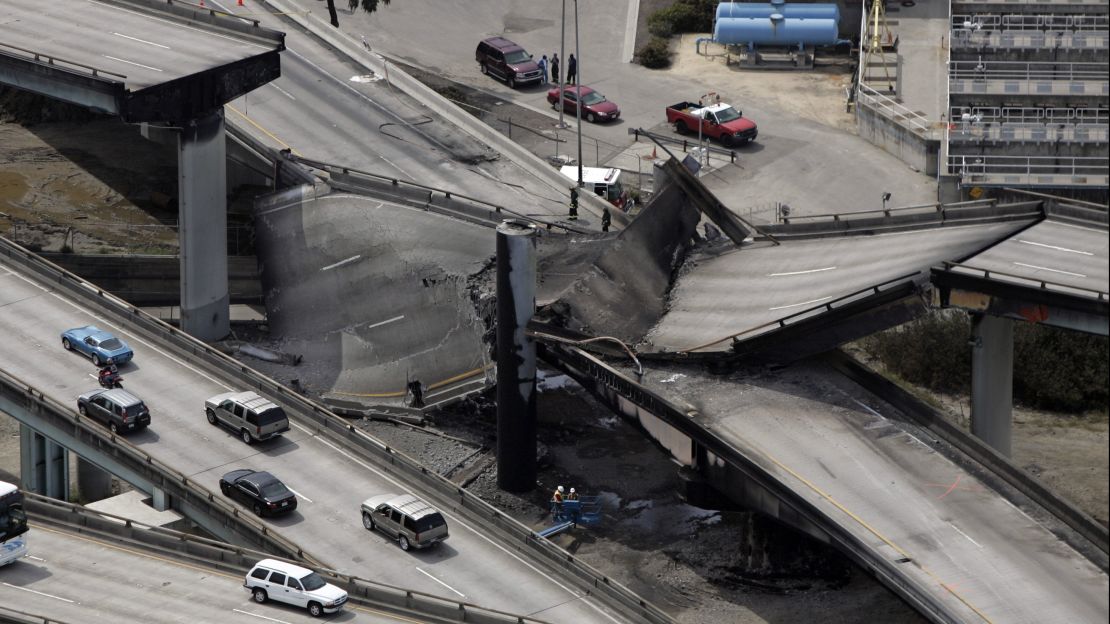
A gasoline-carrying tanker truck crashed and exploded in the predawn hours of April 29, 2007 while driving along the “MacArthur Maze,” a large freeway exchange that connects Interstates 580, 880, and 80 in Oakland. The heat from the fire buckled a section of the raised I-580, which then collapsed onto I-880 below, according to a report in The New York Times.
I-880 suffered little structural damage and was back up eight days later, according to SF Gate. I-580 was rebuilt and back in place on May 24, a total of 26 days later and well below the 50-day expected deadline. The construction contractor was paid about $6 million for the job.
“Malfunction Junction” highway collapse in Birmingham, Alabama

On January 5, 2002 a tanker truck crashed and exploded in the highway interchange known as “Malfunction Junction,” which connects Interstates 65, 20, and 59 in Birmingham. The heat melted part of the overhead bridge, causing it to sag.
Officials decided to demolish the bridge and build a new one. The new bridge was completed on February 27, a total of 53 days later – well below the expected 90-day timeline. The state paid the contractor $2 million for the construction as well as about $1 million in bonuses for completing the project under deadline, according to the Federal Highway Administration.
I-40 bridge collapse at Webbers Falls, Oklahoma
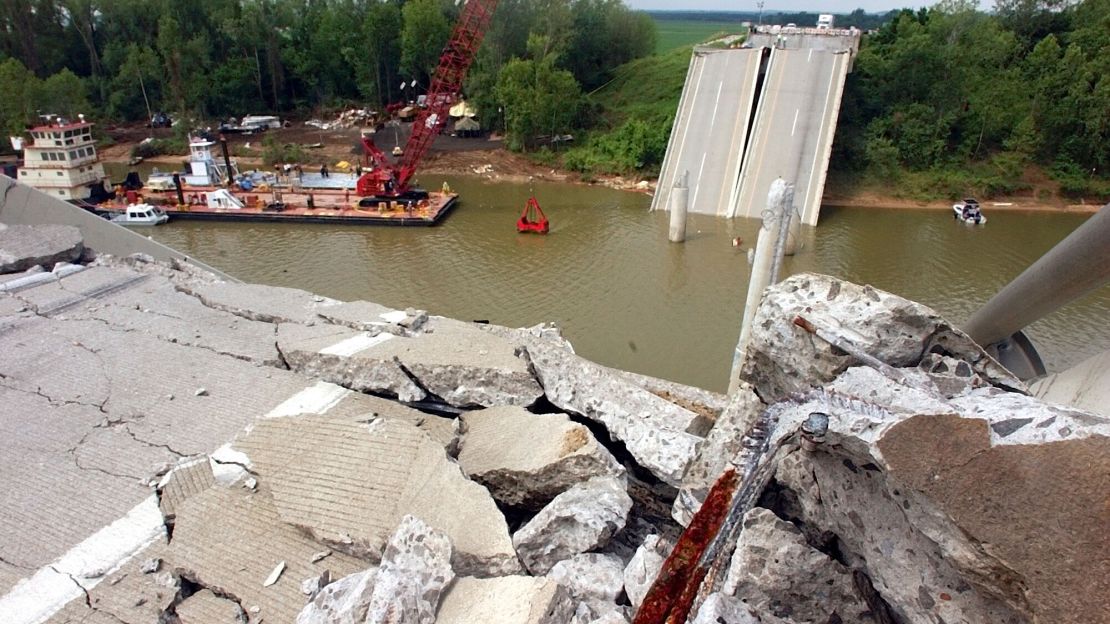
On May 26, 2002, a towboat pushing two tank barges rammed into the I-40 highway bridge in Oklahoma, collapsing a 500-foot section of the bridge into the Arkansas River below. A total of 11 vehicles fell into the river or the collapsed part of the bridge, and 14 people died. The crash occurred because the captain of the towboat had lost consciousness, the NTSB later found.
A replacement bridge was completed about two months later and cost about $30 million, according to NewsOK.
Big Dig ceiling collapse in Boston, Massachusetts
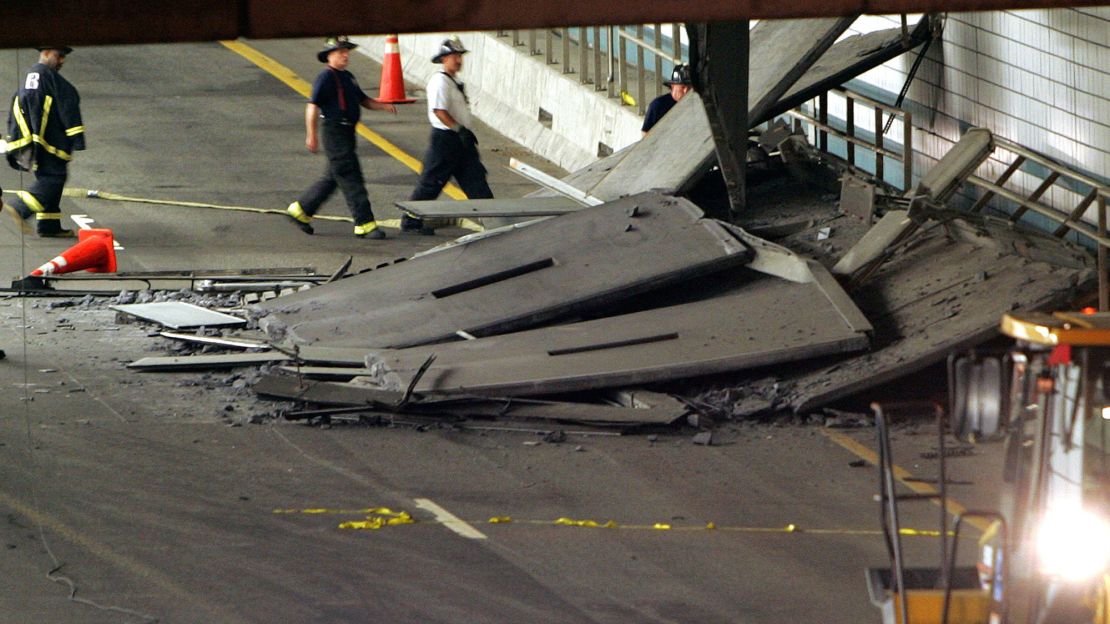
The “Big Dig” was the name for a series of major infrastructure projects in Boston that, among other things, took the highway through the city and moved it underground. On July 10, 2006 a section of concrete fell from the ceiling of the I-90 connector tunnel and onto a car, killing one person.
The NTSB determined that the collapse was caused by the failure of an epoxy anchor that was not capable of sustaining long-term loads.
The I-90 connector tunnel was shut down for a safety inspection. On September 1, one lane of the connector reopened, and further sections reopened in November, according to the NTSB.
I-35 Mississippi River bridge collapse at Minneapolis, Minnesota
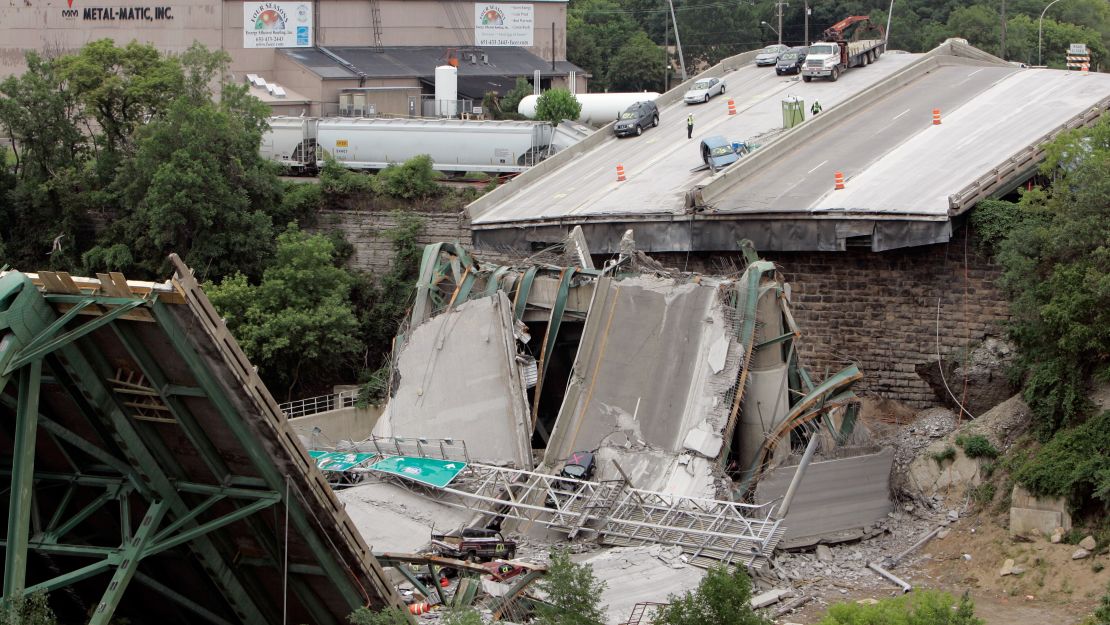
In one of the most disastrous structural failures in recent history, the I-35 highway over the Mississippi River collapsed at evening rush hour on August 1, 2007. More than 100 vehicles were on the bridge at the time and plummeted into the water below, killing 13 people and injuring 145 others.
An NTSB study found that the metal gusset plates, which connect parts of the bridge, were not strong enough to support the weight of the bridge. Their design failure caused a chain reaction that collapsed the whole bridge.
Because of the importance of I-35, officials moved to rapidly rebuild the bridge. On September 18, 2008 – more than 13 months after the collapse – the I-35W Saint Anthony Falls Bridge opened. The new bridge cost $234 million to build, plus $25 million in bonuses for finishing ahead of schedule, according to the Star Tribune.
I-5 Skagit River Bridge collapse near Mount Vernon, Washington
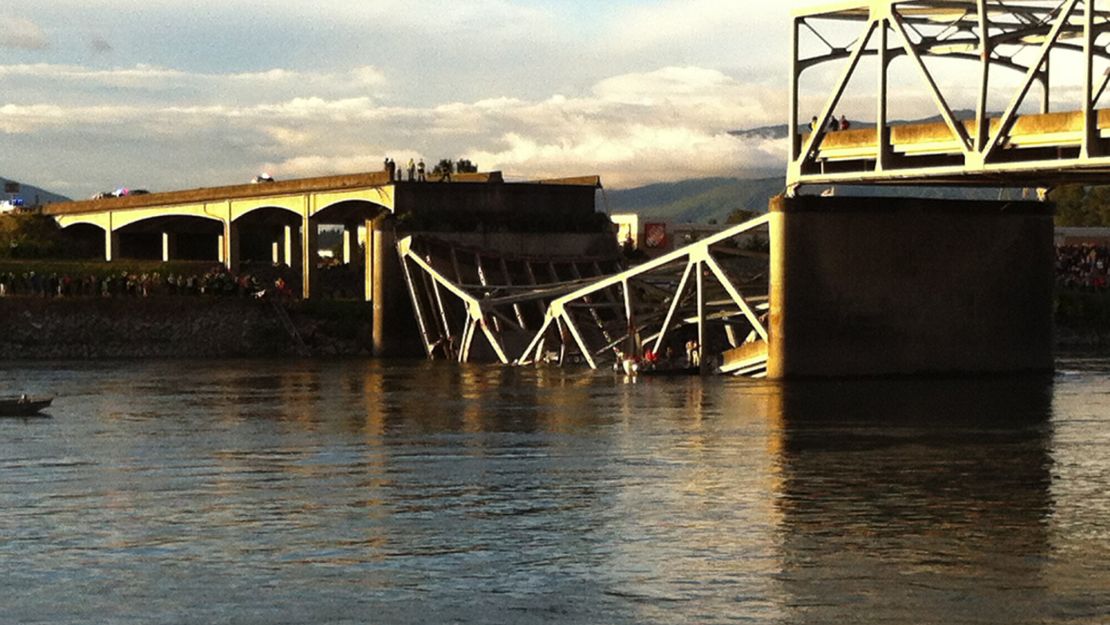
On May 23, 2013 an oversize load truck hit the overhead support beam on the I-5 Skagit River Bridge, causing the bridge’s collapse. The highway connects Seattle with Vancouver, so officials moved quickly to divert traffic and get to work on repairs.
A temporary bridge was built on June 19 to alleviate delays and traffic. A permanent bridge was completed on September 14, less than four months after the collapse. The total cost of the replacement was $20.7 million, according to the state.
CNN’s Lindsey Knight contributed to this report.

